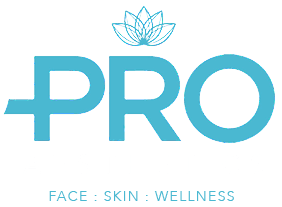Chemical Peel: How does it work?
A chemical peel, also known as a skin peel, is a skin treatment that performs a chemical exfoliation on the top layer of your skin. It is particularly effective at treating problematic or congested skin, but how does it work? What does it actually do to the surface of your skin?
How does a chemical peel work?
A chemical peel is a solution that is lightly applied to your skin using an applicator pad or brush. It contains different chemicals and acids (don’t worry, nothing scary) in different concentrations depending on your choice of peel. What happens during a chemical peel is this: the chemicals damage the top layer of your skin that is blocking new skin from developing and coming to the surface. This damage results in the skin cells on the surface dying and drying out, coming off in ‘flakes’ and peels of dry skin. Your skin then reacts by preparing a fresh layer of skin cells to take the surface cells’ place, helping to rejuvenate the skin.

Chemical peels and collagen
Because of the controlled wounding on the surface of the skin, your chemical peel kickstarts your skin’s renewal and healing processes. Fresh skin cells are produced, but fresh collagen and elastin also begin to be produced to aid this new layer. This results in diminished fine lines, a little extra fullness to the skin, and a little added laxity. Over a course of chemical peels, your skin could appear more youthful and fuller of vitality through renewed skin cells and collagen production.
Chemical peels and acne
Acne and blemishes are usually characterised by very oily and changeable skin. These skin types become very easily congested because the excess oil production can encourage dead skin cells to clog the pores and hair follicles in your skin. This, of course, leads to blemishes and blackheads and enlarged pores. A chemical peel strips the natural oil from your skin and damages the already-damaged top layer of skin. It presses the reset button on your oil production and also exfoliates away the plugs that were stopping blemishes coming to the surface, allowing your skin to purge its congestion in the form of spots. Getting rid of these spots like this while stripping away the excess oil helps to guide your skin into a more regulated oil production. A course of chemical peels could see blemishes and oil production limited to a more normal amount that is easier to manage.
Chemical peels and pigmentation
Pigmentation, or hyperpigmentation in its most stubborn form, occurs when your skin has been exposed to damaging factors and it has tried to heal itself quickly. Sun damage causes hyperpigmentation in later life, for example, and occasionally acne scars can come in the form of post-inflammatory hyperpigmentation when they have healed. Chemical peels can help to ‘lighten’ the skin through damaging the top layer, thereby encouraging the production of a new layer. Slowly but surely, skin can be ‘releveled’ from the inside like this, as the new skin cells produced will not be damaged by hyperpigmentation. Another effective treatment for pigmentation problems is microneedling.

If you haven’t discovered the benefits of a chemical peel in West Bridgford, Nottingham yet, why not book your free consultation with Pro Aesthetics? Together, we can create a personalised treatment plan that will transform your complexion into healthy, glowing, even skin. Get in touch on 0115 9831097 to arrange your first appointment today.
Keep up to date with Pro Aesthetics on Facebook and Instagram.

